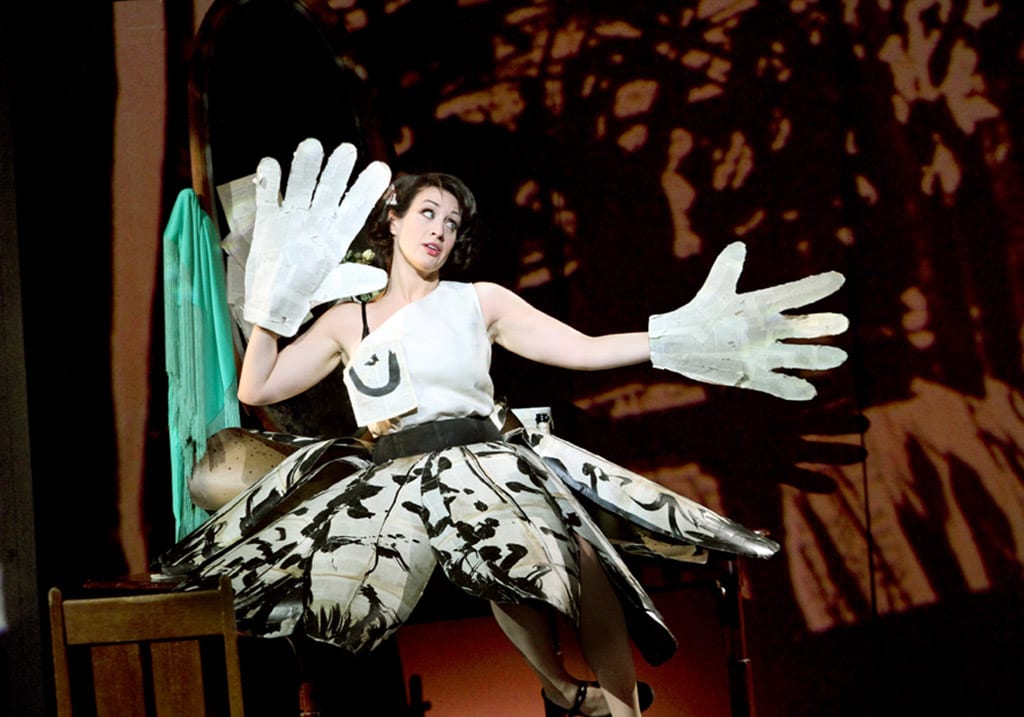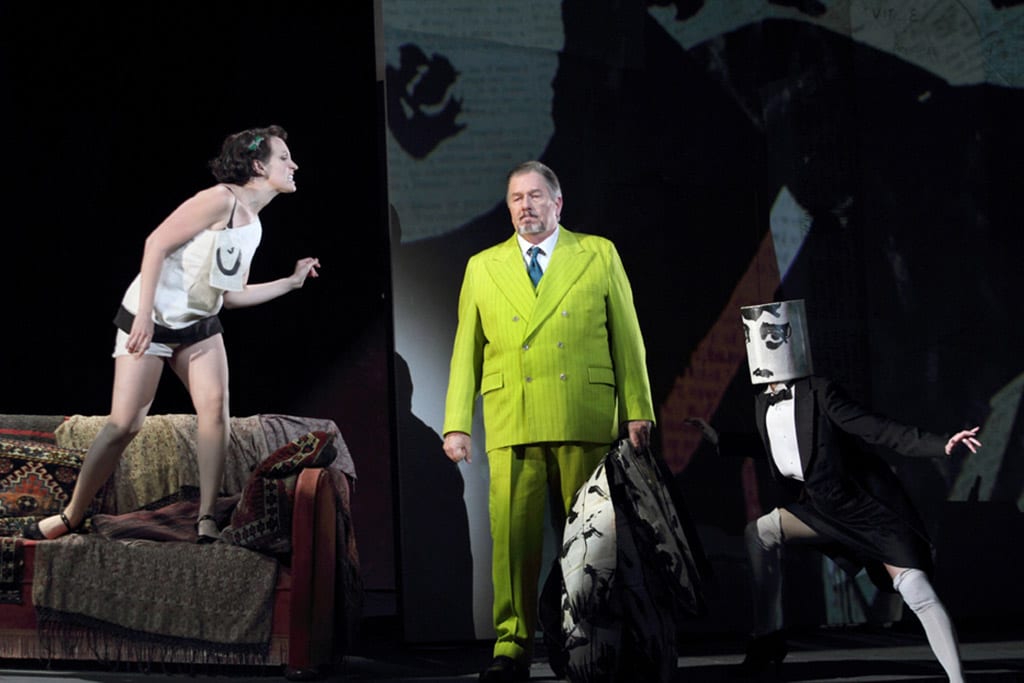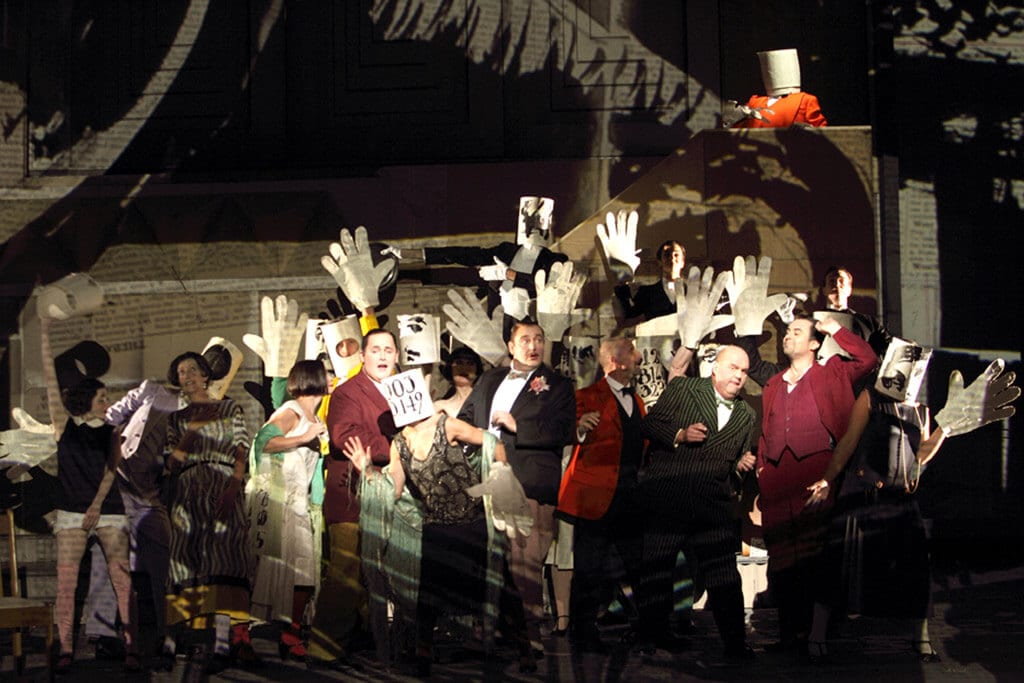Lulu is a difficult opera to watch at any time – on the day of the US election result it seemed even harder on the emotions than usual. The connections with Weimar Germany, the contempt for women, and the casual disregard of human dignity – all these features seemed intensified in this marvellous new production for English National Opera. And while it may seem strange to start with commenting on the look of a production, it must be acknowledged that the design of the piece is the feature that sets this production apart. William Kentridge and his team have done a marvellous job in bringing the piece to life, and in a context that is true to its origins in 1930s Germany.
The story of the opera is drawn from two plays by Wedekind and it tells of the rise and fall of actor/lover/harlot Lulu, around whom the male (and female) characters revolve in a cruel rondo of lust, devotion, exploitation, contempt and incomprehension. Lulu moves from her first marriage to Doctor Gall to a second marriage with ‘The Painter’ – both die. She marries her lover Doctor Schon, who also meets an untimely death. She is both seductress and victim and, in the stunning performance given by Brenda Rae, every twist and turn of the life she leads takes on dramatic force and truth. Though she sounded a little underpowered in the first act, Rae grows as the role develops and by the climax of act 3 she was entirely convincing as the doomed victim. It’s a fearsome role and, pacing her early singing, Rae achieves a real triumph.
Other members of the large cast shine too. Sarah Connolly does wonders with the difficult role of the Countess Geschwitz, hopelessly devoted to the capricious Lulu. As Lulu’s stepson Alwa, Nicky Spence sings with passion, hitting the high notes with clarity and style. And special praise for dancer Joanna Dudley who is a constant unsettling presence on stage, mirroring Lulu’s moods and underscoring the aggressive sexuality of Lulu’s constant reliance on her ability to arouse lust in those around her.
The music is, to this listener, harsh and discordant except for moments of almost Wagnerian orchestration but its logic and discipline are well realised by Mark Wigglesworth and the ever-reliable ENO orchestra and, by the third act, even the most determined fan of romantic opera will have at least come to understand – if not love – Berg’s musical language.
But the final words must return to the stunning production and the design ideas that underpin it. There is no curtain and the audience is faced with the bleak black and white setting as we take our seats. Kentridge’s black pen-and-ink drawings have echoes of Weimar artists like Grosz and Dix but are also very modern. ‘The Dancer’ enters as if to play the grand piano but climbs onto it and into it and uses it as the platform for her provocative commentary on Lulu’s sensuality and vulnerability to male violence. Back projections display the drawings animated in many different ways; they form a dramatic backdrop to the action which illuminates the story without distracting from it. This is an unsettling and challenging production of an important opera – much credit to the ENO for its decision to share the cost of the production with companies in New York, Amsterdam, and Rome. For ambitious productions of big operas this is a wise and productive strategy and it pays off with huge artistic rewards here.





